|
The students in Julie's class are in class because they want to be. They are either working and, therefore, studying
at night to improve their daytime speech, or preparing to continue on in higher level English classes and pursue regular studies
later. Since no grades are given here, the students are relaxed and informal.
Julie tells me that she has been working with improvisations and has just started to move on to plays. Students have
read several and selected ones that they would like to work with. They have also selected the characters that they would like
to play. Now, each group works together as a cast for their play.
But, before the group work begins on the plays, Julie has a few exercises to involve the whole class and focus her student's
attention on movement.
For a warm up exercise, Julie explains that tonight "we will work on movement and gesture." She gives each student a
piece of paper with a situation written on it that the student will depict through mime. The students read silently and some
look through their dictionaries to look up vocabulary. Then, Julie models an action for the class. She depicts entering
a cinema and taking a seat.
Each student, in turn, develops, through mime, the situation s/he has been given on the slip of paper. The
students observing the mime guess what is being depicted.
| Driving a car |
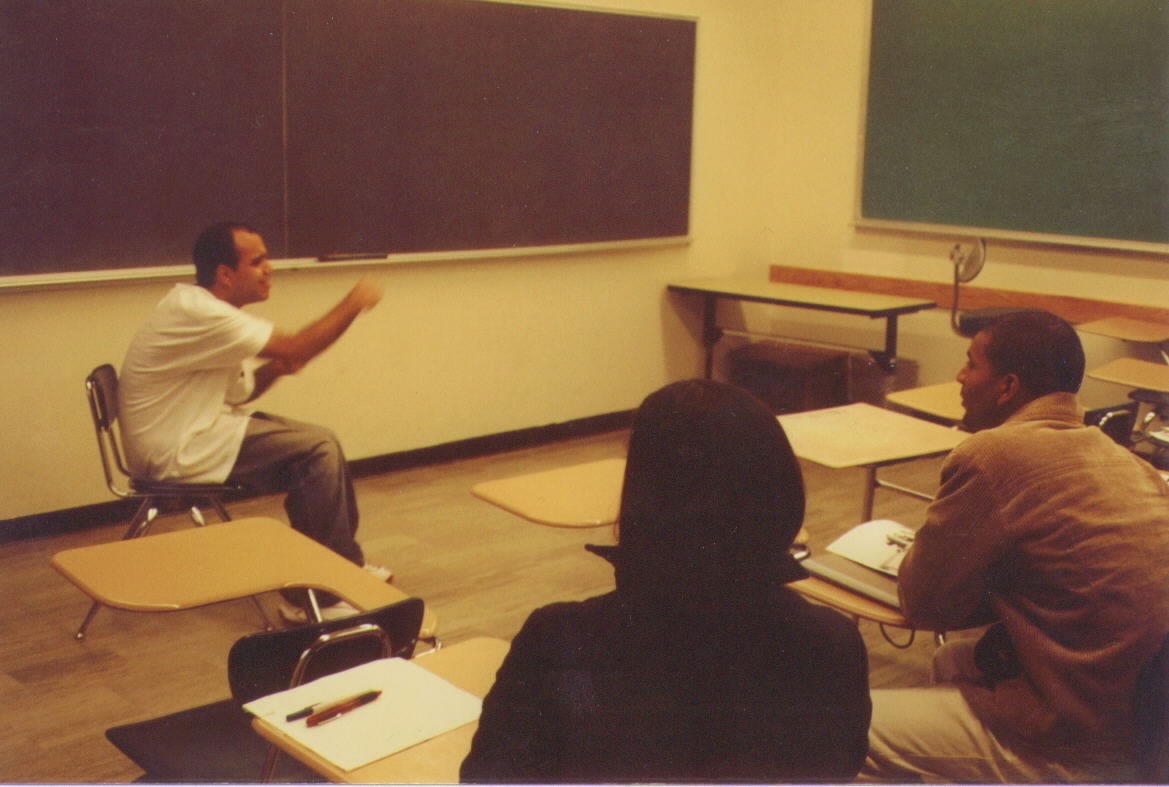
|
| Miming |
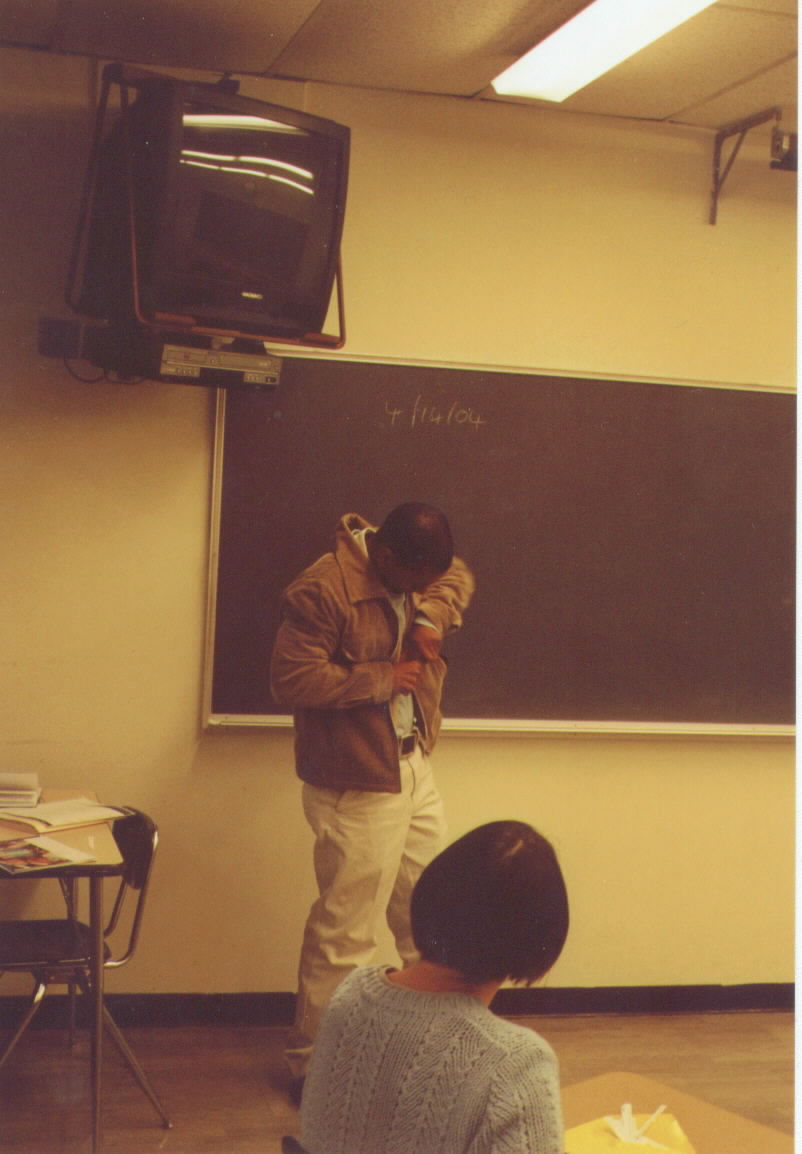
|
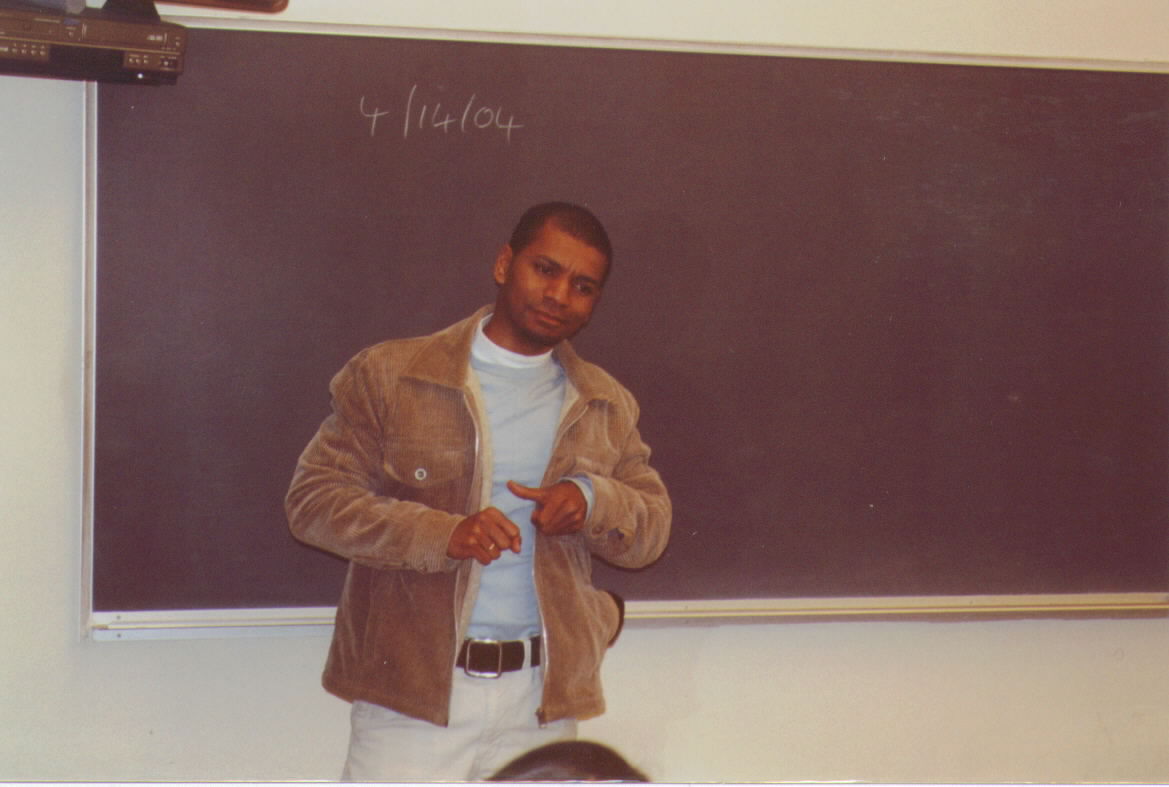
|
|
| Pulling Julie out of the water |
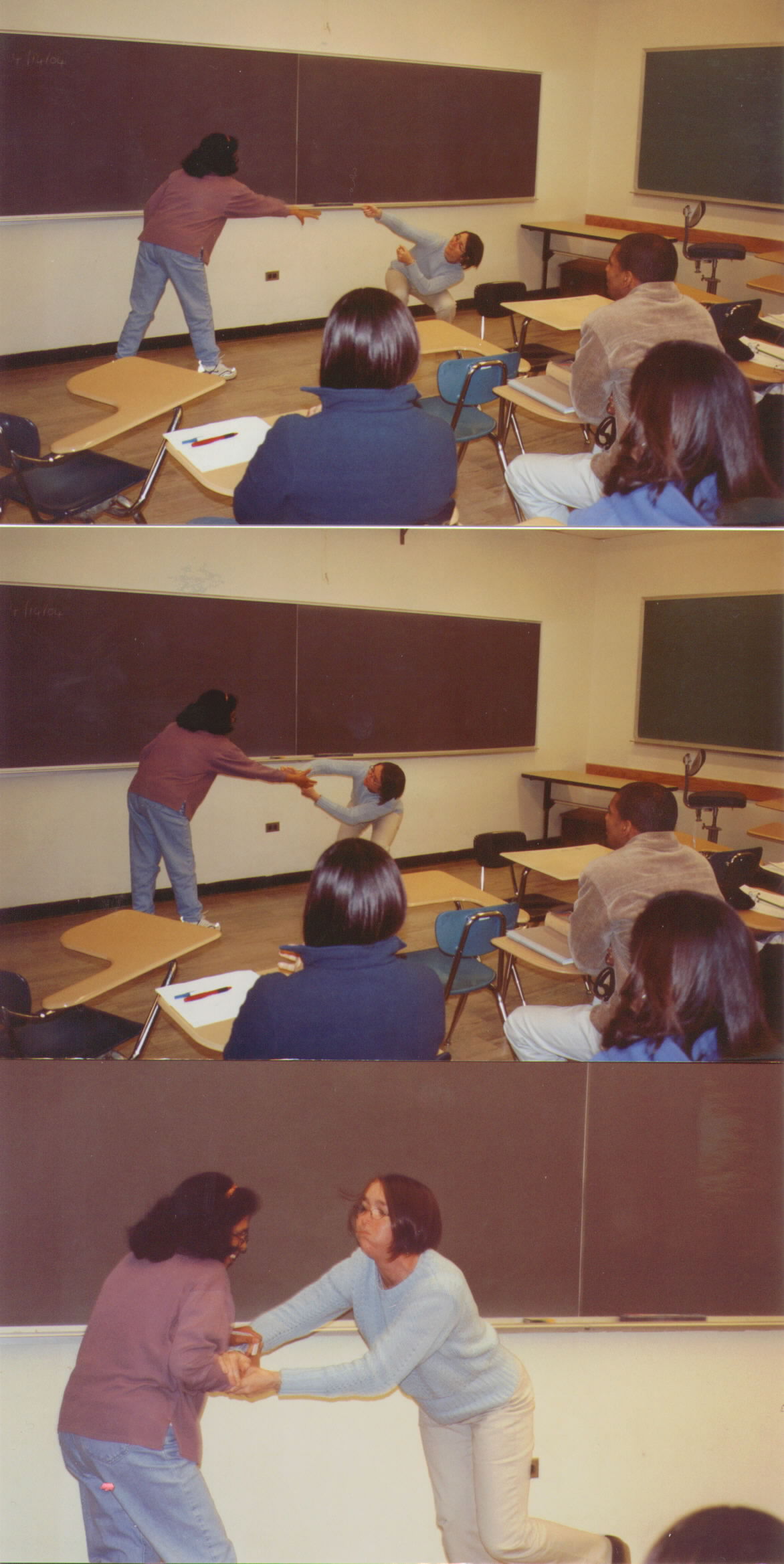
|
After the warm up mime exercise, Julie has the class break into three groups to work on their plays. They will consider
and discuss the characters that they will play. In order to help the process, Julie gives each student a "Character Biography"
handout from her and Ann F. Burke's book, Stage by Stage. It considers age, gender, body description, marital status,
relationships, general background, occupation, and relationships with others in the play. The students are encouraged
to fill in any other detailed information as well. To fill in the form and write a character biography, the students often
use dictionaries to find just the right word to describe their characters and to help with spelling.
Next, the students discuss what they have written with Julie and then go into the details of their characters in discussion
with others in their group, each person asking questions and getting answers.
| Small groups form for work on each play |

|
| Finding the right word for her character |
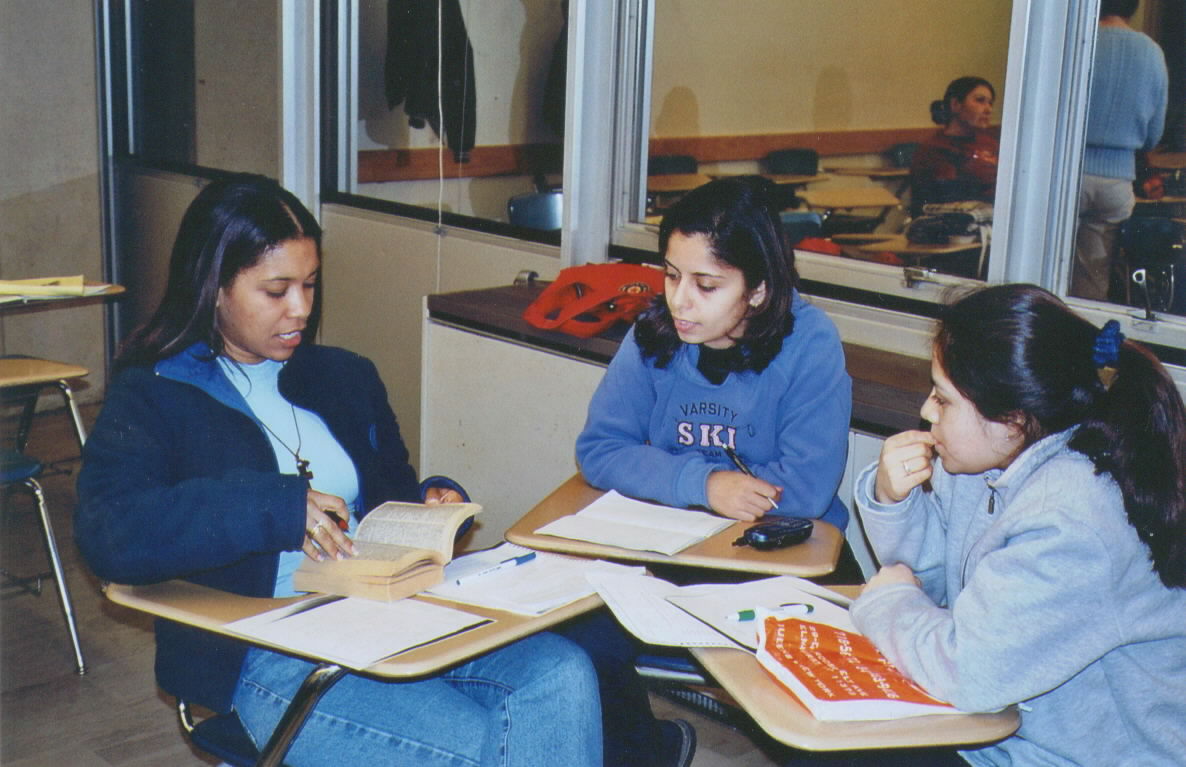
|
| Character discussion |
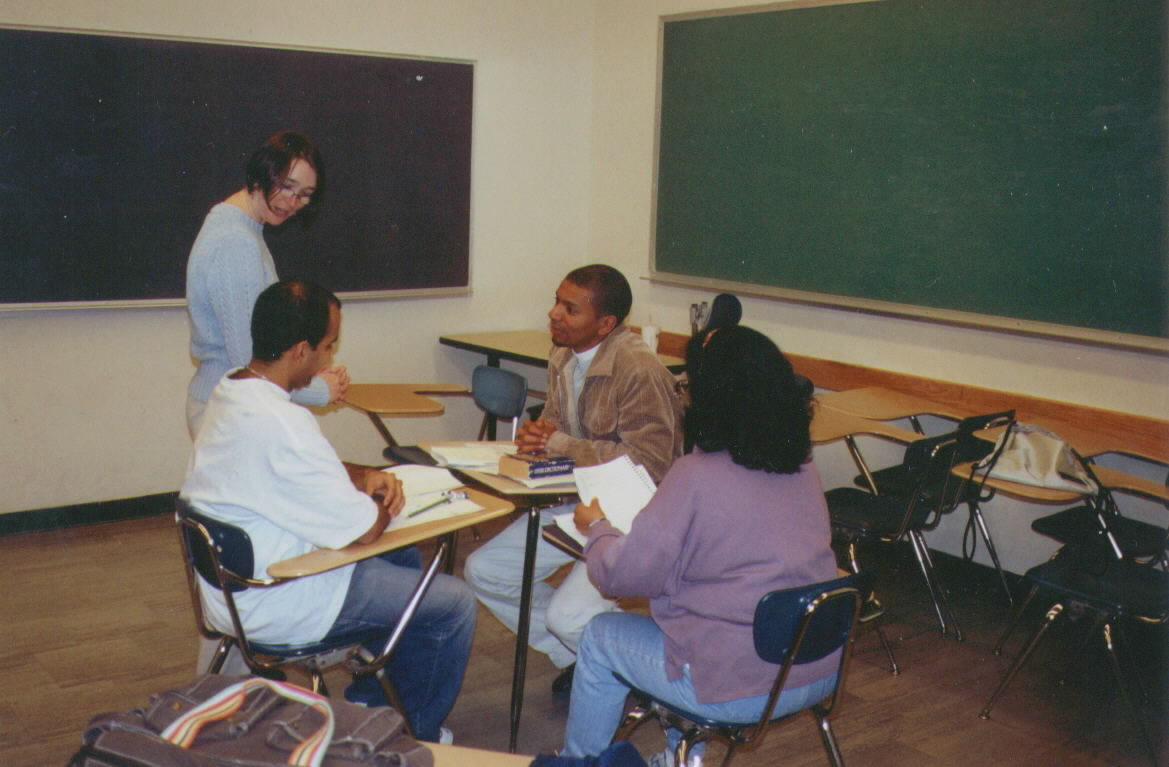
|
| Discussiong character |
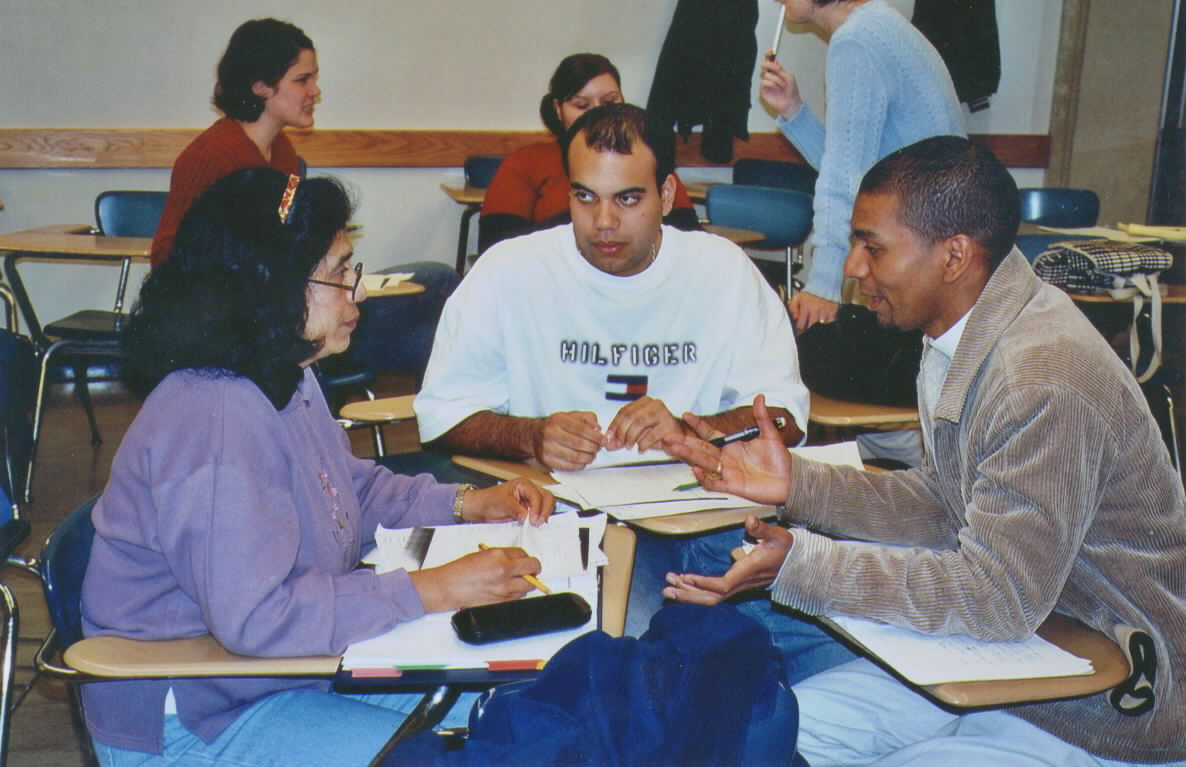
|
| Making sure it all makes sense |
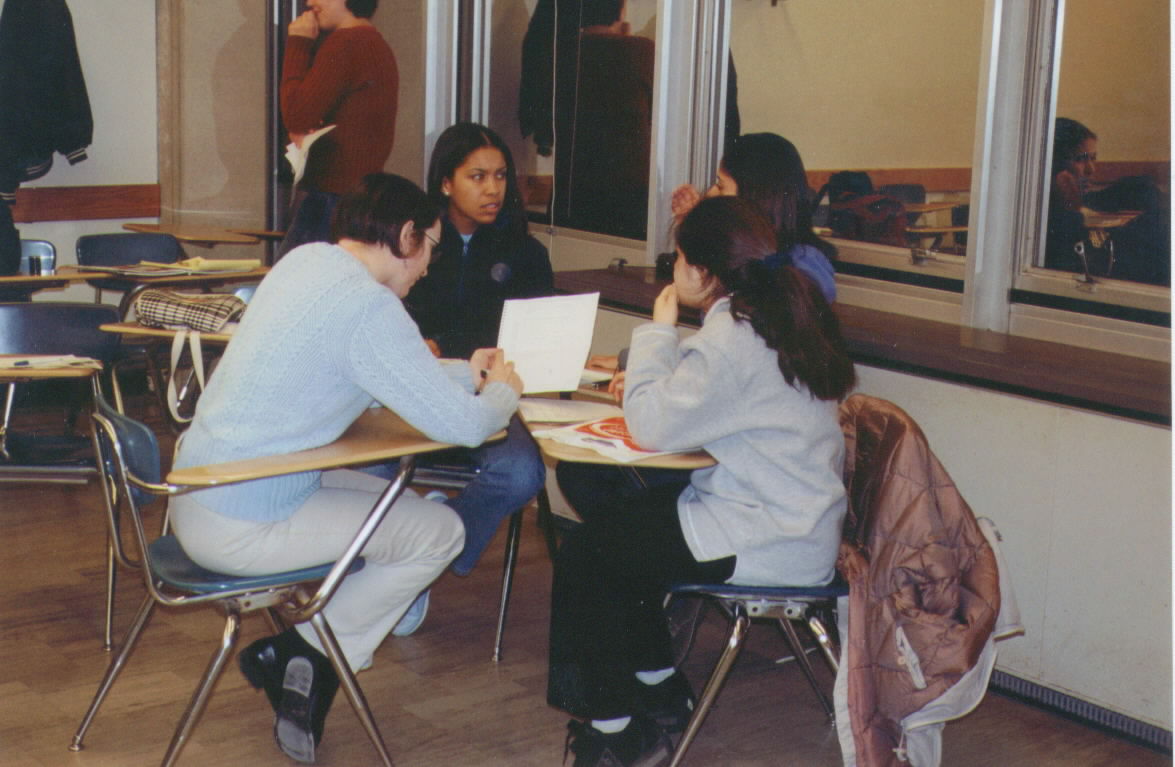
|
After the students have been given time to discuss their characters in as much detail as possible, Julie has then get
up from their seats and move about the classroom introducing themselves to each other in charater. They have a chance to move
as their characters would move, speak as there characters would speak, and think as their characters would think. The characters
from the three plays all interrelate as at a cocktail party.
| Eight characters in search of development |

|
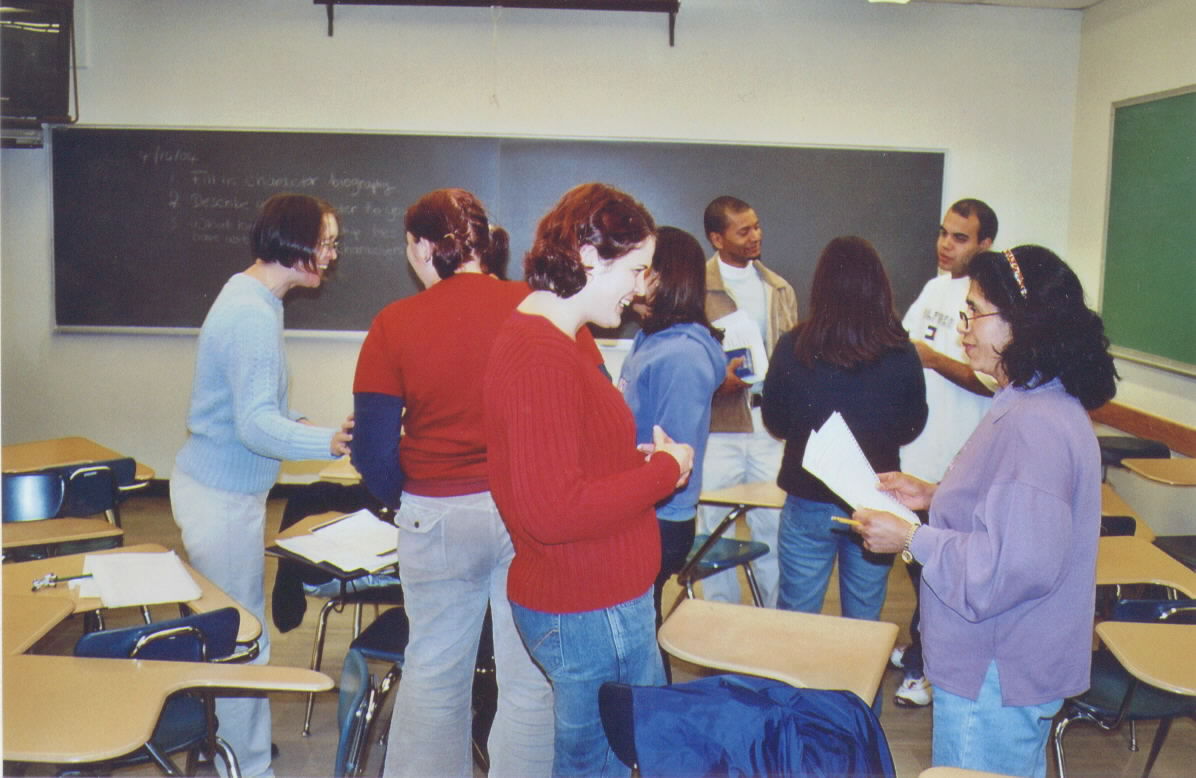
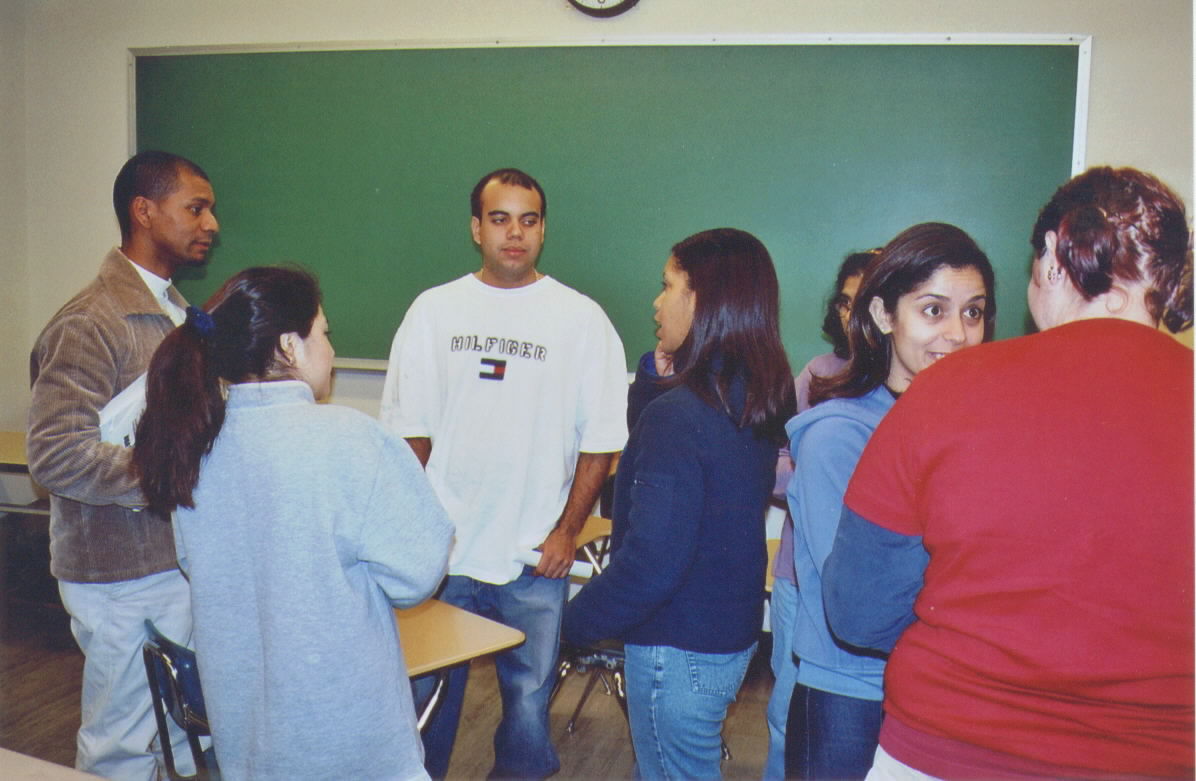
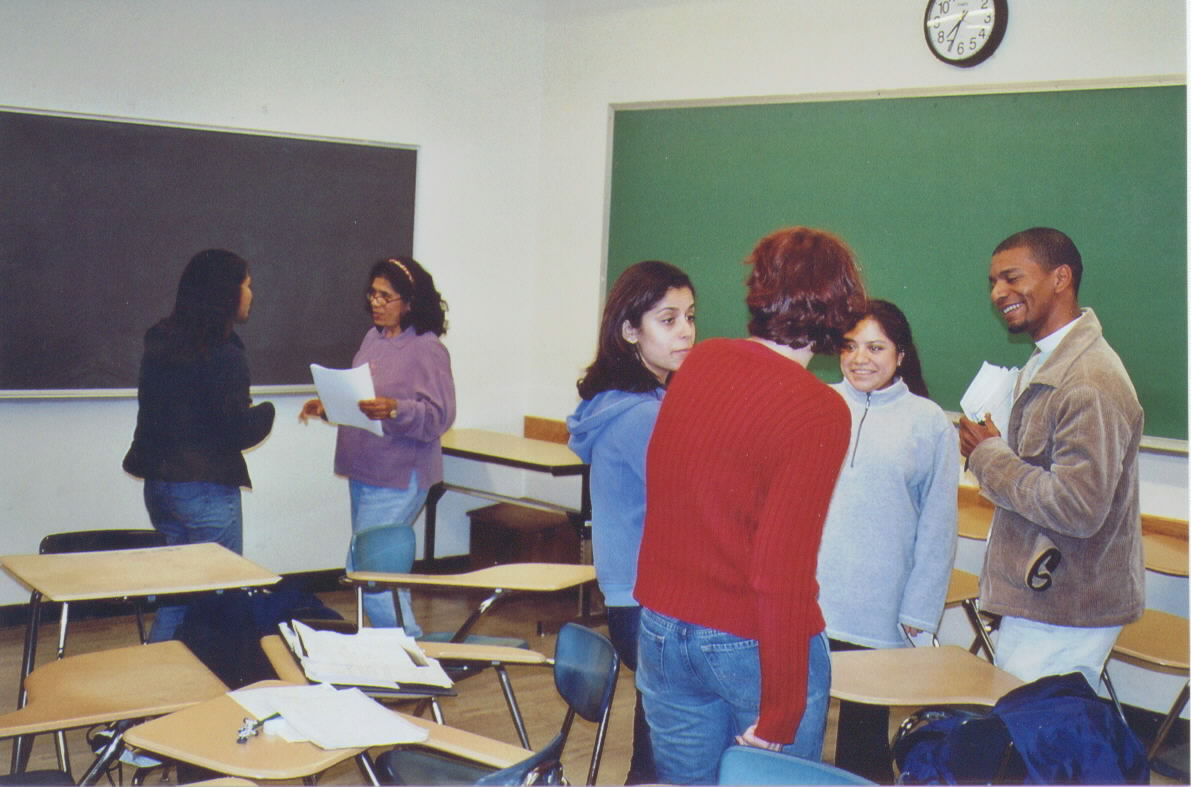
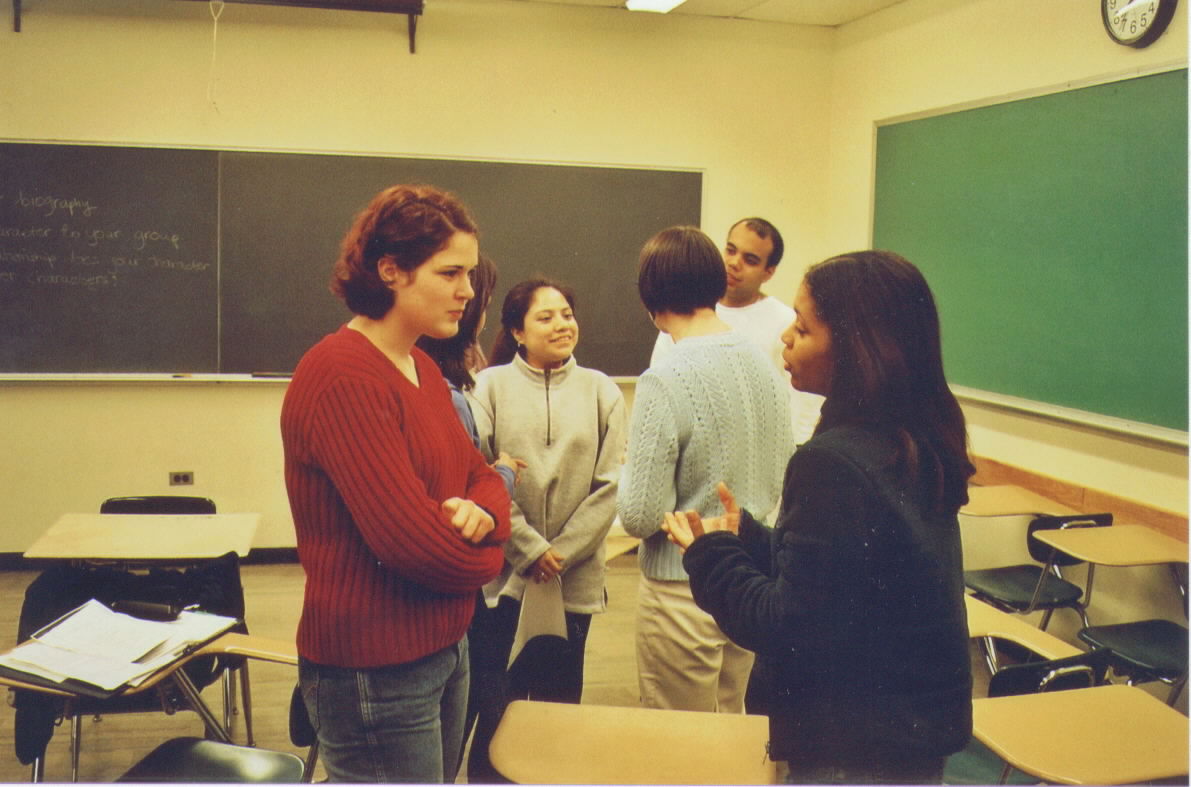
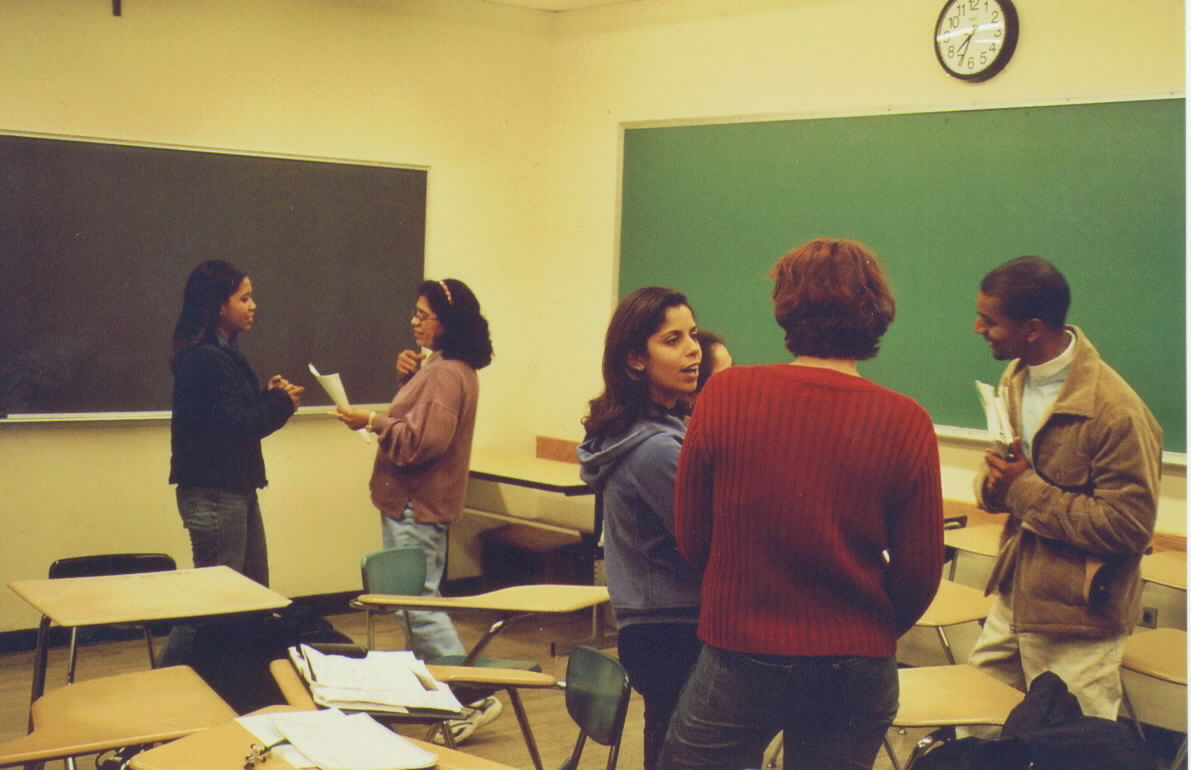
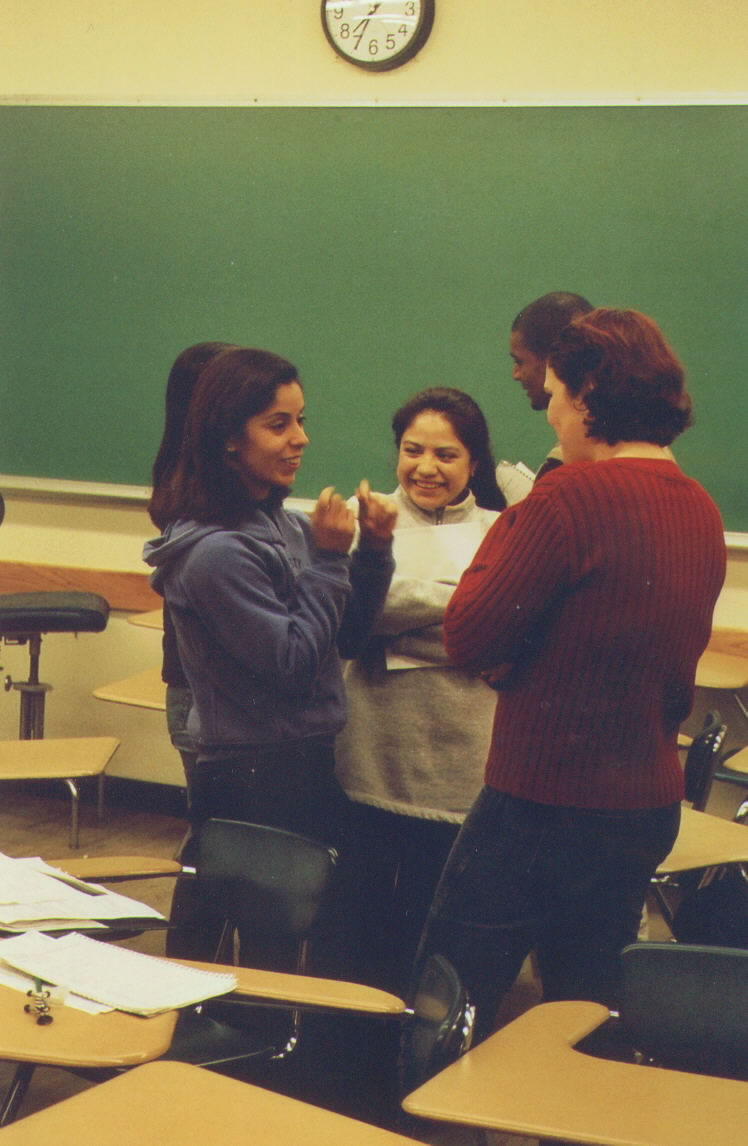
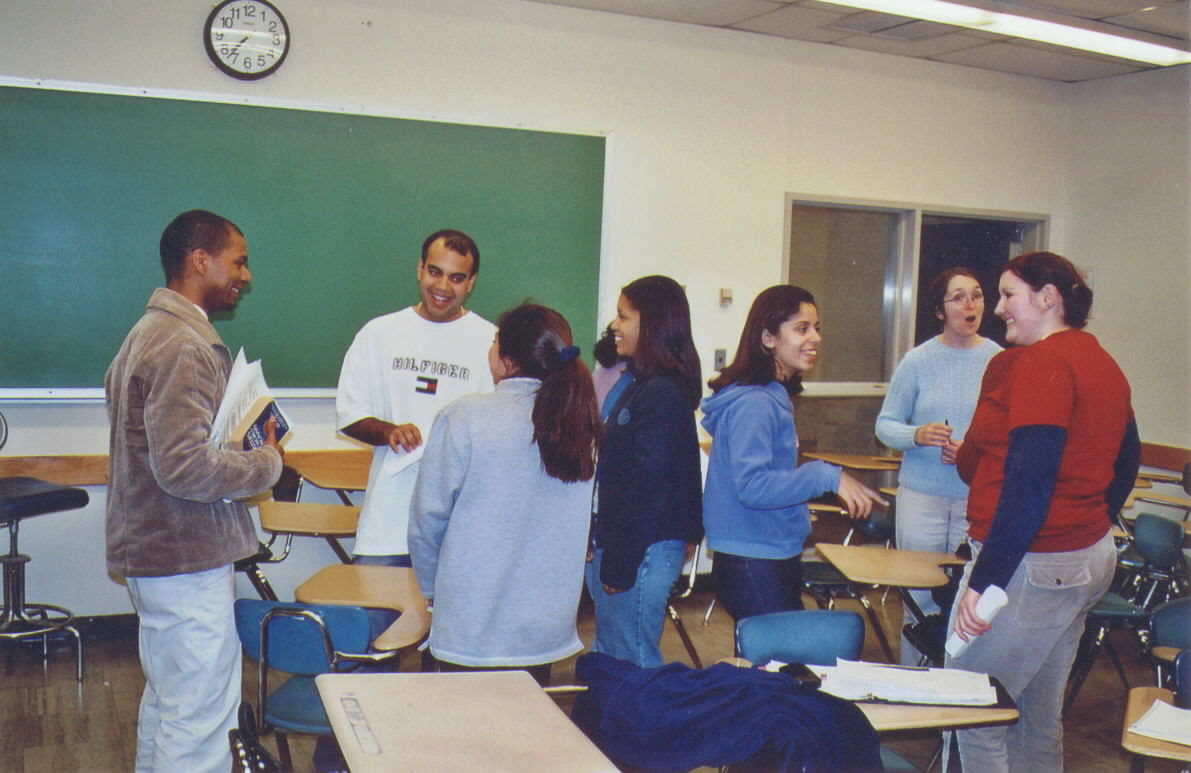
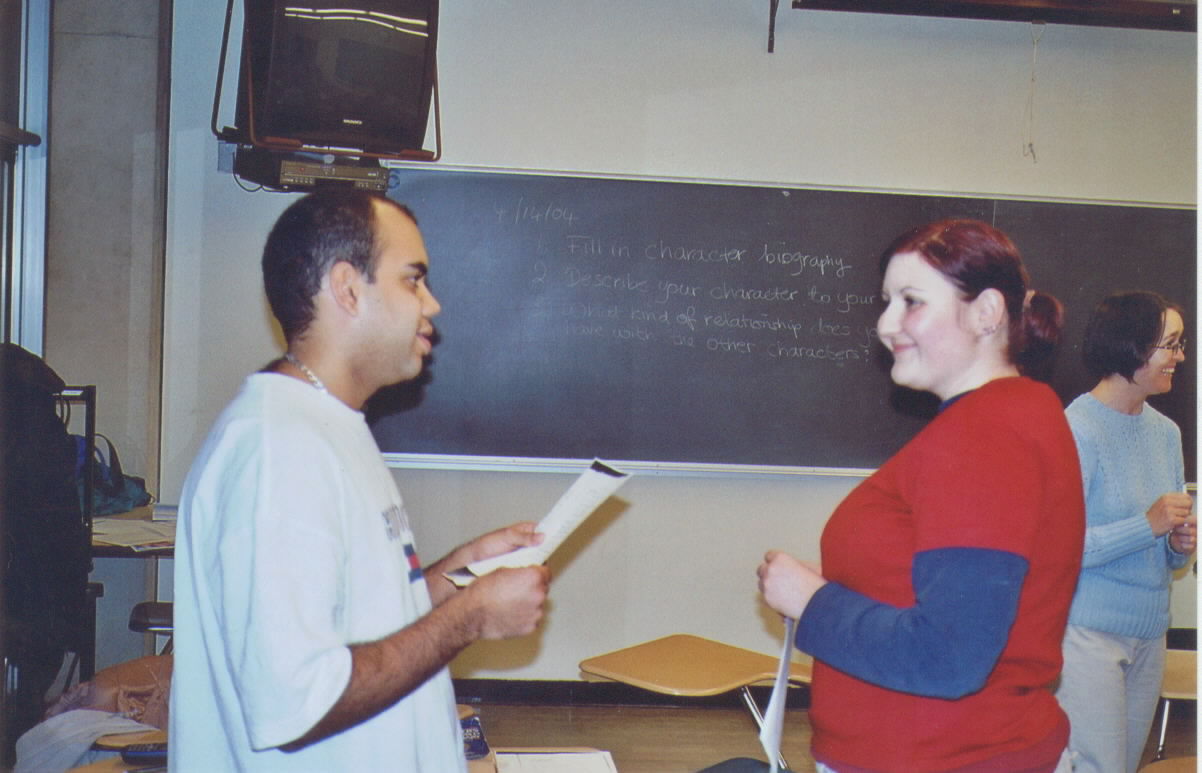
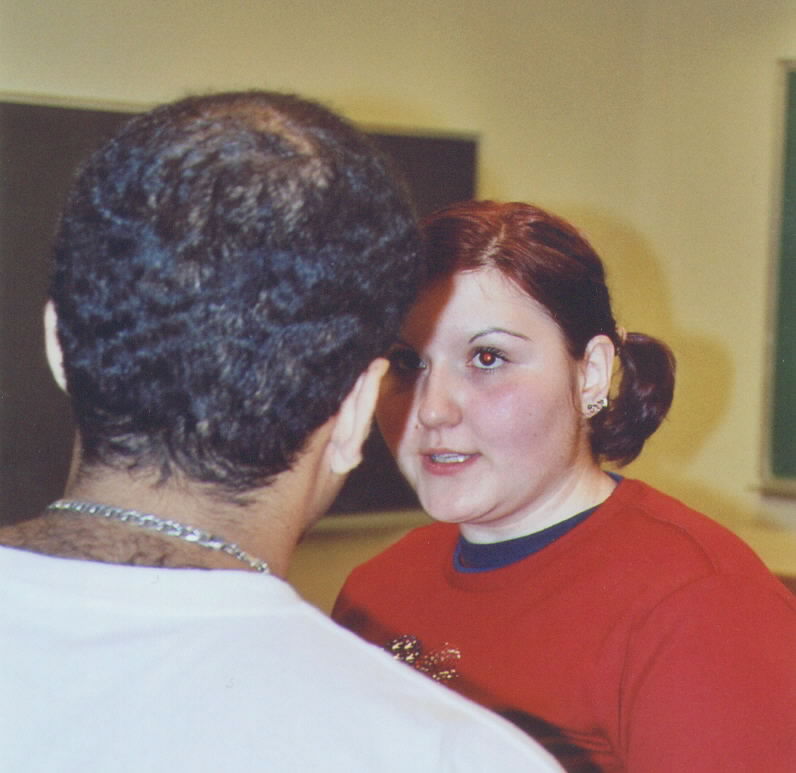
After fifteen minutes or so of the "cocktail party," it is 7:45. We are halfway into the class time and it is time for
a fifteen minute break.
Julie O'Sullivan's Class -- Part Two
|



